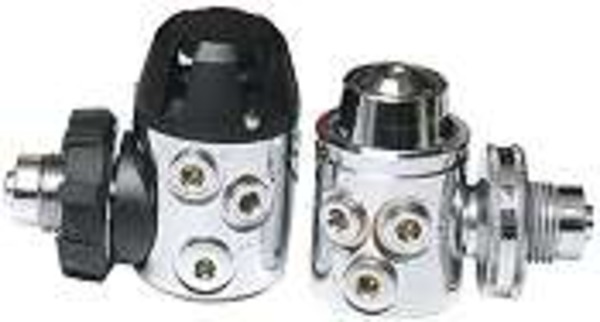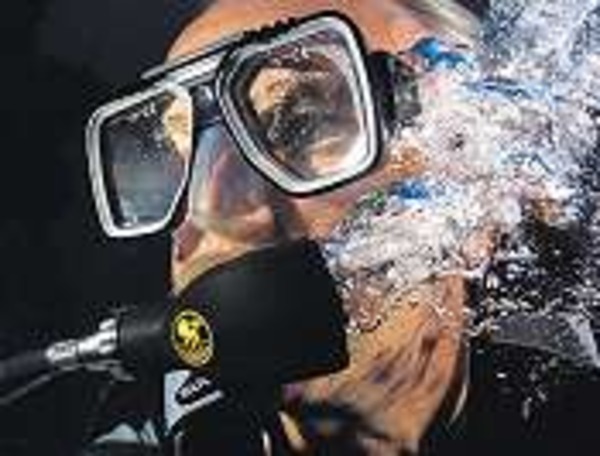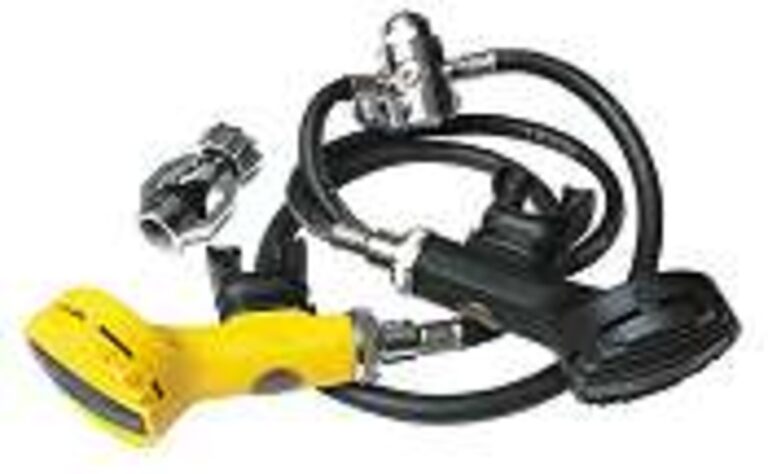Deprecated: Automatic conversion of false to array is deprecated in /home/837581.cloudwaysapps.com/gcahrcedfn/public_html/wp-content/plugins/link-whisper-premium/core/Wpil/Settings.php on line 3073
The Poseidon Jetstream ruled the roost for years, until a new generation of rival regulators threatened its supremacy. It still has its faithful admirers today, especially among deep divers. Can its long-awaited successor, the Xstream, live up to the Jetstream’s legendary reputation? asks John Bantin.
The Japanese discovered the jet-stream during World War Two. It’s a high-altitude wind that travels eastwards.
They used it to bomb the USA from high-flying balloons, although the Americans were not to admit that for another 50 years – they simply did not want to believe it.
The Poseidon Jetstream is a regulator that has been exalted as the best for a long period. Alas, when something better came along many preferred not to believe that either.
And so it was up to about 10 years ago. There were so many regulators which were, quite frankly, such feeble performers that the good ones stood out, and there weren’t many of those.
Swedish-built Poseidon regulators had dominated the scene where divers needed good supplies of air at what were then considered extreme depths, below 30m.
They virtually had the market to themselves for more than a decade, and that’s a long time for any brand to remain established as the best.
However, diving moved on, and so did the development of diving equipment.
By 1992, no longer were some regulators failing to meet the ANSTI criteria at depths as shallow as 25m, and there were clusters of products that could go well beyond 50m while supplying four divers simultaneously, as we revealed in a Diver Test at the time.
I dismayed the people in Sweden, and not a few resolute Poseidon fans over here too, by revealing that the Poseidon Jetstream was no longer alone in its ability to do this, nor was it by then even the best.
That was the 20th century, and now we are in the 21st. Poseidon has introduced a revolutionary new regulator, the Poseidon Xstream, so we decided to compare the Deep 90 version of the Xstream with the Poseidon Jetstream, until now that marque’s top-of-the-range model.

The compact first stage of the Jetstream is still one of the smallest available, even if its design now looks rather dated. It looks like a valve-fitting from something like an Ascot water heater.
But then, it was designed a long time ago. However, this diaphragm-type design has stood the test of time and a lot of divers swear by theirs.
Its compact dimensions are great for those who use DIN connections to their tanks. Those who use International A-clamp fittings are less well served because the adapter is a massive lump of chrome-plated brass which sets the first stage rather far forward on the tank.
You might clout your head on it if your BC were rigged at the wrong height.
The Xstream is intended purely for technical divers. It is rated to be effective at 200m and is said to meet EN250 criteria specified for 50m at that depth.
However, I bet a lot of people will want to buy it on the premise that, if it can be used that deep, “it will be all right for me at 30m.”
DIN CONNECTION
Such divers will immediately find shortcomings with this model. The Xstream is really intended only for use with a DIN connection, and there is only one high-pressure and three low-pressure ports on the Deep 90.
Other versions have fewer. That’s because few technical divers with multiple tanks want to run two second stages from a first stage, and the fewer the orifices, the less the potential for leaks.
For the purpose of this review, diving in relatively shallow (less than 60m) water, I thought it best to borrow an extra second stage. However, Poseidon does not normally offer an octopus rig.
The all-new first stage of the Xstream is a complete departure from what Poseidon has done before, in that it is a sort of enclosed-piston design.

Where the Jetstream’s diaphragm design was built to keep water away from the crucial working parts, and so avoid the effects of freezing, the Xstream’s first stage is designed with a large exposed spring that doubles as a heat-sink.
This draws what heat there is in the water and pumps it past the valve using both the action of the valve and the movement of the diver.

This is an entirely different and opposite method of avoiding freezing. The novel spherical valve seat is rather like a ball-bearing and is claimed to obviate wear.
You can choose either the version I used, with its DIN valve connection on one side of the first-stage barrel, or have the connection on one end.
The second stages of both the Jetstream and Xstream are typically Poseidon, in that they can be used either way up. You can rig them either from the left or right, and the exhausted air is directed to one side.
This does mean that if you position the exhaust port of the Jetstream upwards, you can find water coming in, just as you might with any regulator, so remember to keep your head level should you decide to turn to look behind you. It’s something you get used to.
Alas, tilting your head so that the exhaust port is clearly downwards results in the exhaled bubbles obscuring the view from the eye on that side.

Not only have regulators improved in performance during the past decade but second stages have shrunk in size, too.
The second stage of the Jetstream seems incredibly large and unmanageable by today’s standards.
There is a dive/pre-dive switch which is meant to limit the chance of an exponential free-flow at the surface, although I found that this was not 100% reliable.

It’s a servo design, so when you inhale, the drop in pressure within the housing causes the front diaphragm to push open a small slave piston, which in turn opens the main supply.
It’s a bit like that moment when Captain Scott put his head outside the tent to see what had happened to Captain Oates.
Something akin to a howling Antarctic gale whistles round your tonsils. Stop inhaling, and the tent-flap is slammed shut.
I am aware that many divers like this style of delivery. I prefer something a little more subtle. I am less inclined to enjoy the act of breathing if, every time I inhale, I think: “Oh no, here it comes!”
However, if you are very deep and have vast quantities of gas available for consumption, there must be something comforting about the fact there is gallons of it coming your way with each intake of breath.
So the Jetstream certainly gives you lots of air. I can understand how the first divers to experience its supply appreciated the flow compared to the asthmatic offerings from some other manufacturers of the time. However, that was then and this is now.
The Xstream has a much smaller, neater second stage, designed with a reduction of CO2-gathering dead-space in mind, though it is still large compared to some of those made by Poseidon’s competitors.
Unusually, it has an upstream servo valve that opens the main valve on demand. The thinking is that it will resist the free-flow effect so often encountered by previous Poseidon users.
In case of malfunction and an increase in interstage pressure, a safety valve is incorporated in the hose to bleed off excess gas.
A nice touch is the authentic Poseidon necklace that fits to lugs provided specifically, although I found that this tended to float up round my head when under water.
Putting it on to a tank and opening the air supply prior to diving gave me a bit of a shock. It gushed air better than the Flying Scotsman gushed steam when it finally arrived, after the long haul from London, at Waverley Station.
I assumed that it was faulty, but a call to Poseidon confirmed that this was normal. I was told I had only to stick it in my mouth to stop it. Hence the futility of trying to use it with another (free-flowing) second stage as an octopus rig.
So, not without some trepidation, I dispensed with the octopus second stage and set it up on a tank with an H-valve, with a second complete (non-Poseidon) regulator in reserve. I then turned on the tank only immediately before diving.
As before, the Xstream let off air with a frightening roar, drawing startled looks from other divers on the boat. It stopped abruptly when I put it in my mouth, exactly as promised.
SECOND SURPRISE
Now for the second surprise. Under water, instead of getting the expected icy blast each time I inhaled, I found that I was breathing from one of the nicest regulators I have ever used.
Did I really say that? Yes, this Poseidon gave me one of the nicest, subtlest breathes ever.
It may have its pressure-sensing diaphragm on the side of the regulator, and the exhaust deflector may put the bubbles out to one side, but the actual exhaust valve of the Xstream is positioned centrally within it, so there was no hint of a wet breathe however I twisted and turned.
The mouthpiece was soft to my mouth yet firm in my grip, and the flow of air was as near to breathing normally as one can possibly expect. Wow! Am I really saying this about a Poseidon regulator?
So if you are prepared to get an H-valve for your tank, and buy a second regulator as your octopus, you can enjoy using the Xstream for ordinary leisure diving.
Provided you don’t mind turning on your supply immediately before you need it, I can recommend the Xstream unreservedly, whereas the Jetstream is for fans of Captain Scott.
The new Poseidon Xstream Deep 90 costs £375 and is designed for use with air or trimix.
Deco and Duration models are for pure oxygen and nitrox specifically, have slightly different inter-stage pressures and are colour-coded for easy identification.
There is also an Xstream Deep (with two lp ports only) for use with trimix. The Poseidon Jetstream costs £255.
Poseidon Diving Systems 01420 84300, visit website

